The Art of Tea TOKYO space
・・・・・・・・・
How are you all? This is Tanaka from GRIDFRAME.
We visited Kyonan Town in Chiba and Oku-Noto to collect SOTOCHIKU materials. We’ve completed a spatial project using these materials: “The Art of Tea,” a shop selling Nambu ironware and tea utensils/leaves, in Asakusa, Tokyo. We’d like to share more details.
Founded in 1848, the Nambu ironware workshop of Oitomi (https://oitomi.jp/) is a space punctuated by time, truly dedicated to creation, where every step is a painstaking series of manual labor. This new shop will be Oitomi’s first specialty shop.

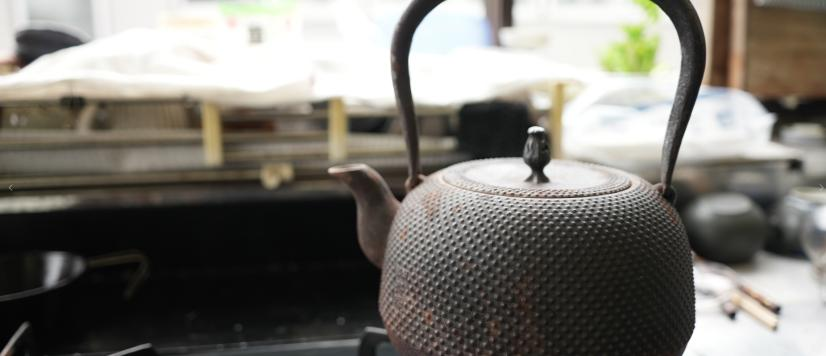
HOJO, a tea leaf and tea utensil retailer, is particular about using authentic wild tea that grows in the mountains, traveling to the mountains of Yunnan in search of its rich, lingering flavor. They also focus on the materials that make tea taste better, and work with teapot makers to develop techniques for firing and design, resulting in unique teapots for sale.


The attitudes of these two companies are themselves SOTOCHIKU-esque, and I was convinced that their products would shine when blended into the SOTOCHIKU space.
Asakusa and Kappabashi are bustling with many foreigners who have a respect for Japanese culture. The store name, The Art of Tea, will surely evoke the culture of the tea ceremony for foreigners.
I believe that the tea room of Sen no Rikyu, who established the tea ceremony, is the very essence of a SOTOCHIKU space, and I wanted to ensure that this space was completely SOTOCHIKU. I referenced tea masters of Rikyu’s time and presented the following concept story.
・・・・・・・・・・・・
[Wabi-jin Zempo no Tee]
At the dawn of the tea ceremony, a wide range of people participated, from the great ruler Hideyoshi to Zempo, who owned only a single tea kettle, and their names remain.
The tea ceremony concept of “wabi,” as expressed in the phrase “like a fine horse tied to a straw shed,” seeks beauty in the contrast between high-quality and ordinary things. More specifically, it seeks beauty in the placement of high-quality objects against a backdrop of ordinary things.
Moreover, there is a certain flow to this mindset, a strong vector from high-quality to ordinary, from high to low, and it does not seem to be an attempt to further highlight high quality through simple comparison.
That’s why Zempo, who only owned a single tea kettle, was called a wabi-bito (a wabi person), and he was considered the ideal, a pure spirit that didn’t possess or fight, and was intended to be a refreshing breeze for those living in the Warring States period.
All things lose their form over time. The origins of the tea ceremony lie in surrendering to this natural law, and in allowing each person to gaze upon and acknowledge the individuality that remains after the form has been stripped away.
Meeting the perfect SOTOCHIKU material for this story. While encounters cannot be controlled, the only path to opening up the future is to seek out new encounters and face them one-on-one.
<Materials from Kyonan Town>
On August 10th, I visited Kyonan Town, Chiba, to retrieve the beams from an old wooden warehouse that had been demolished. This warehouse made such a deep impression on me that it was selected as one of the top 15 out of the 1,000 photos collected during the Nationwide SOTOCHIKU Charson Facebook event held in the summer of 2021, where over 100 people participated and shared photos of SOTOCHIKU.
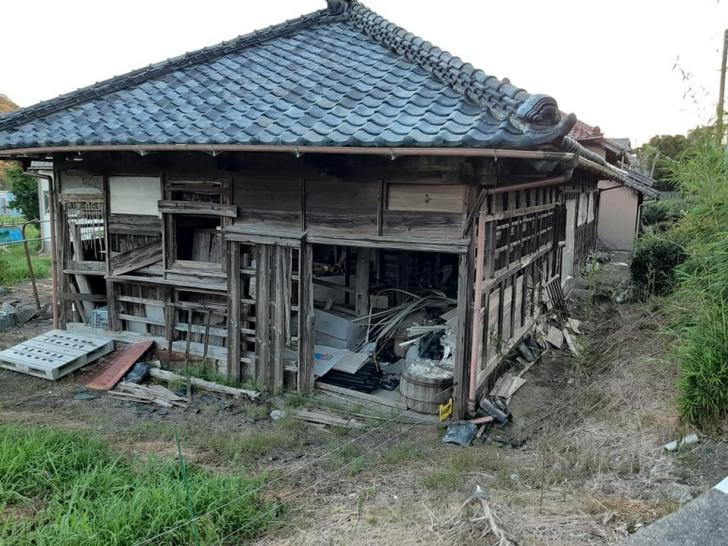


Here’s my brief review at the time…
A heavy, perfectly tiled roof is supported by a dilapidated substructure. Its sense of hard work makes you empathize with the building. It’s a SOTOCHIKU that makes you want to ask, “Are you okay?” If donated, the lower part can be used as a SOTOCHIKU material. Alternatively, it can be reinforced and renovated into a SOTOCHIKU building.
So, three years after first encountering it in a submitted photo, I’m very happy that we’ve been able to use part of it, just as I described in my review. The beam on the right in the photo above is the material we harvested this time.
We also used painted steel sheets harvested from Kyonan Town at the first Paint Miracle event, which we detailed in Vol. 6.
<Materials from Oku-Noto>
From August 15th to 18th, I traveled to Oku-Noto to collect donations of SOTOCHIKU materials. This was my fourth visit to Oku-Noto, and staff member M’s ninth. This was my first time here, and shoemaker U, who said he wanted to make geta sandals using Noto’s SOTOCHIKU materials, joined us in the car. The three of us made a lively trip to Noto. It’s wonderful to see SOTOCHIKU spreading beyond architecture.
This time, Mr. O from Udezu, who helped us out with the Abare Festival, introduced us to two homes near Udezu where we could donate SOTOCHIKU materials, so we came from Tokyo in a HiAce.
As I wrote in Vol. 8, materials cannot be called SOTOCHIKU materials unless they have a soul. If possible, I interview the owners and ask them to share any memories associated with the materials. Even if an interview isn’t possible, I try to visualize the time the materials remember.


On August 16th, we received donations of floorboards from a house in Yanami, a coastal village just a few minutes’ drive from Udezu, which was being demolished. Despite being used as a floor covering under tatami mats, they were carefully constructed with not even the slightest gap visible. Many of the boards were over 300mm wide, indicating they were cut from thick trees.


We then moved to a house near Yasaka Shrine in Udezu, where we received a donation of roof tiles that had been removed after the roof was replaced following earthquake damage. Due to severe leaks on the second floor, blue tarps had been covering the interior of the house for nearly eight months until yesterday, when work was completed. The owner, Mr. I, hadn’t been able to watch TV once since New Year’s Day due to concerns about electrical leaks.
Due to a labor shortage, the house hired a craftsman from Kyoto to replace the roof. Noto tiles are no longer available, so they have been replaced with galvalume steel sheets, which are significantly lighter. This means they are more earthquake-resistant.
As mentioned in Vol. 8, the current landscape will inevitably be replaced by a new one. The Noto tiles, once a symbol of Oku-Noto, will likely become increasingly rare.
Mr. I moved from Wajima to Udezu when he was in elementary school. At that time, this house was the only thing standing in the rice fields, and he says he used to watch with excitement from the second floor as the gorgeously lit kiriko floats of the Abare Festival moved in a circle in the square in front of him.
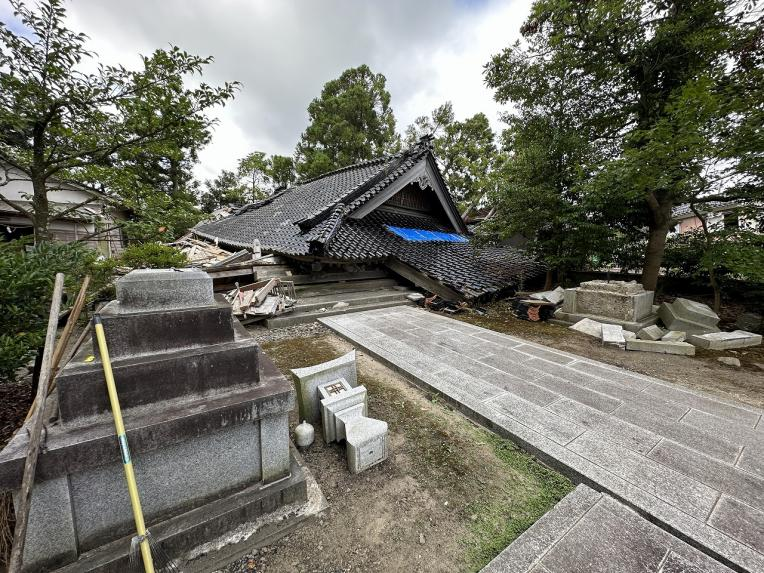

Mr. O kindly introduced me to another shrine, Haguro Shrine in Shoin-cho, Suzu City, so I made a quick visit. The Noto earthquake caused various damages, including tsunamis, uplift, and fires, but Shoin-cho is said to have suffered the greatest damage from the earthquake alone. The main shrine building has collapsed, and the surrounding houses are almost completely destroyed.
Priority is given to residential buildings when it comes to publicly funded demolition, and with only about 10% of residential demolition completed, it’s said that temples and shrines will remain in this state for several years. Incidentally, I’ve never seen a torii gate still standing at a shrine in Oku-Noto.
The chief priest took the time to visit the shrine despite his busy schedule and gave me a detailed explanation of Haguro Shrine’s history and current situation.
When Emperor Sushun was assassinated by Soga no Umako in 592, the third prince, Prince Hachiko, fled to the Hokuriku region with the help of Prince Shotoku. He sailed from the Noto Peninsula, crossed the sea, and passed through Sado Island before arriving at Yura Bay in Yamagata Prefecture. There, he met a bearded old man who told him to head for the mountain where a great deity resides, but he lost his way along the way. At that moment, a large, three-legged crow measuring 2.5 meters (8 shaku) in length flew in and led the prince to a secret place deep in the mountains, dark even in the daytime. It is said that the mountain was named Mount Haguro after the crow that guided the prince. Prince Hachiko trained here day after day and founded the Dewa Sanzan Shrines of Mount Haguro, Mount Gassan, and Mount Yudono. It is said that Haguro Shrines are dotted along the prince’s footsteps along the Sea of Japan coast.
Furthermore, the blog suggests that the place names “Yatsugayama” and “Hachigasaki” in Oku-Noto may also be related to Prince Hachiko. https://ameblo.jp/hagurotetsu/
In the photo above left, only the roof of the main hall remains, and a blue tarp is draped over it. This is because only that part of the roof was demolished to rescue the sacred object and other important items. You can see how the various important items were rescued on the blog.
In the photo above right, rescued votive plaques and fortune slips are carefully hung. They were probably prayed for before 4:10 PM on New Year’s Day, when the main earthquake struck…
For festivals in each region, chief priests from each shrine in Oku-Noto gather. At the Udezu Abare Festival, they reportedly visited each home with the portable shrine and offered prayers. Living in temporary housing, he himself is busy every day supporting the disaster victims.
We collected doors and roof tiles from here.
I have once again vowed to treasure these as precious mementos of the time spent by everyone in Okunoto. Thank you everyone.
<The Art of Tea space>
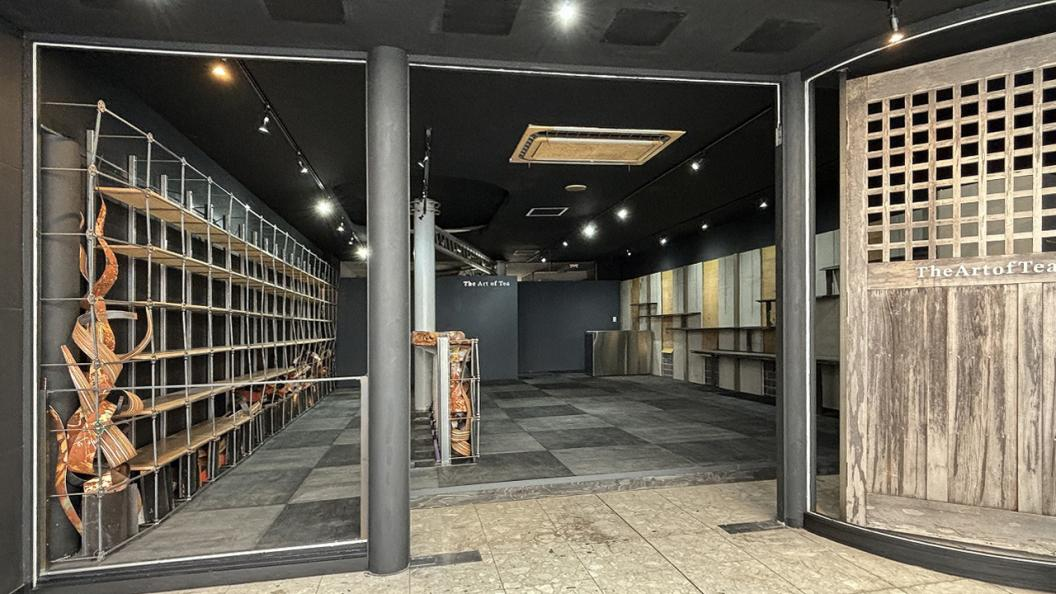
The interior is composed of shelves on the left where 75 pieces of Nambu ironware are displayed, a 6-meter long counter in the middle, and shelves for tea utensils and tea leaves on the right.
[Counter]

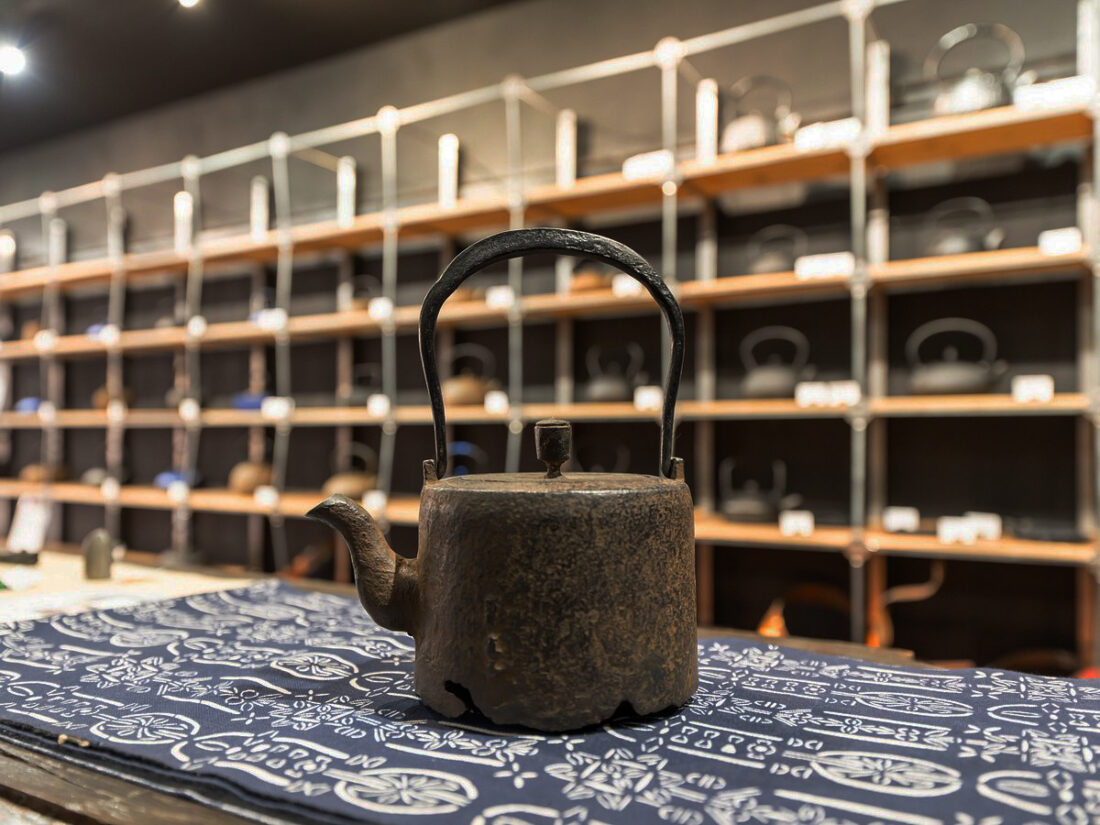

Within the GRIDFRAME structure are “Wild Waves,” made by splitting a brilliantly painted miracle steel plate and drawing free-form curves, and “Iraka Waves,” made by arranging Noto tiles.
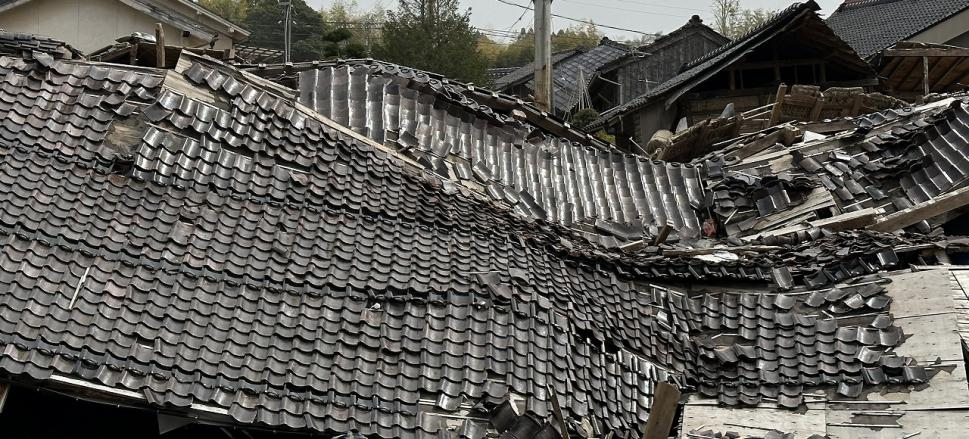
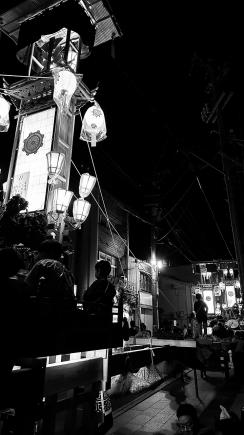
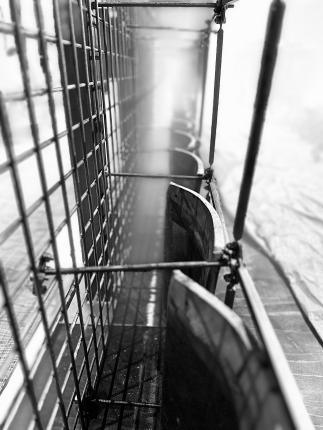
When I saw the large roof that collapsed in the earthquake in April, it undulated like the back of a dragon, giving the impression of dynamic movement as if it were about to rise to the heavens, and it seemed as if a vehicle was waiting to transport passengers to the future to come.
I worked tirelessly to create this space while recalling such a story.





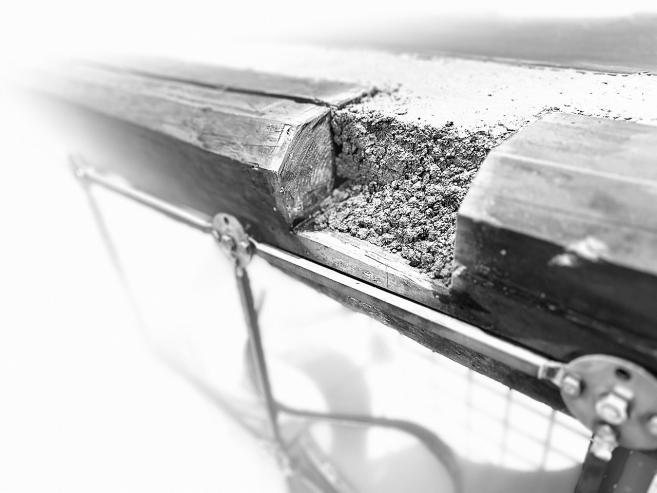
The tabletop is made from four beams from a wooden warehouse in Kyonan Town, with concrete mixed with squid ink poured into the gaps between them.
[Nambu Ironware Shelf]
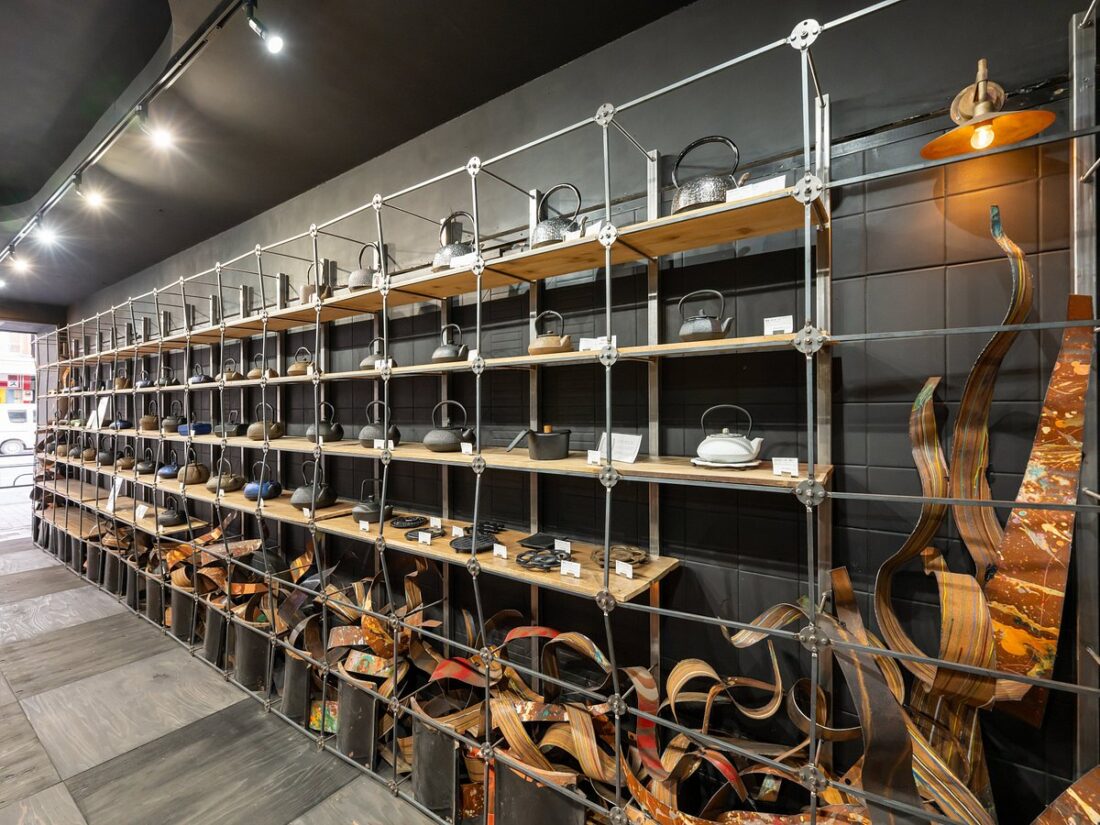
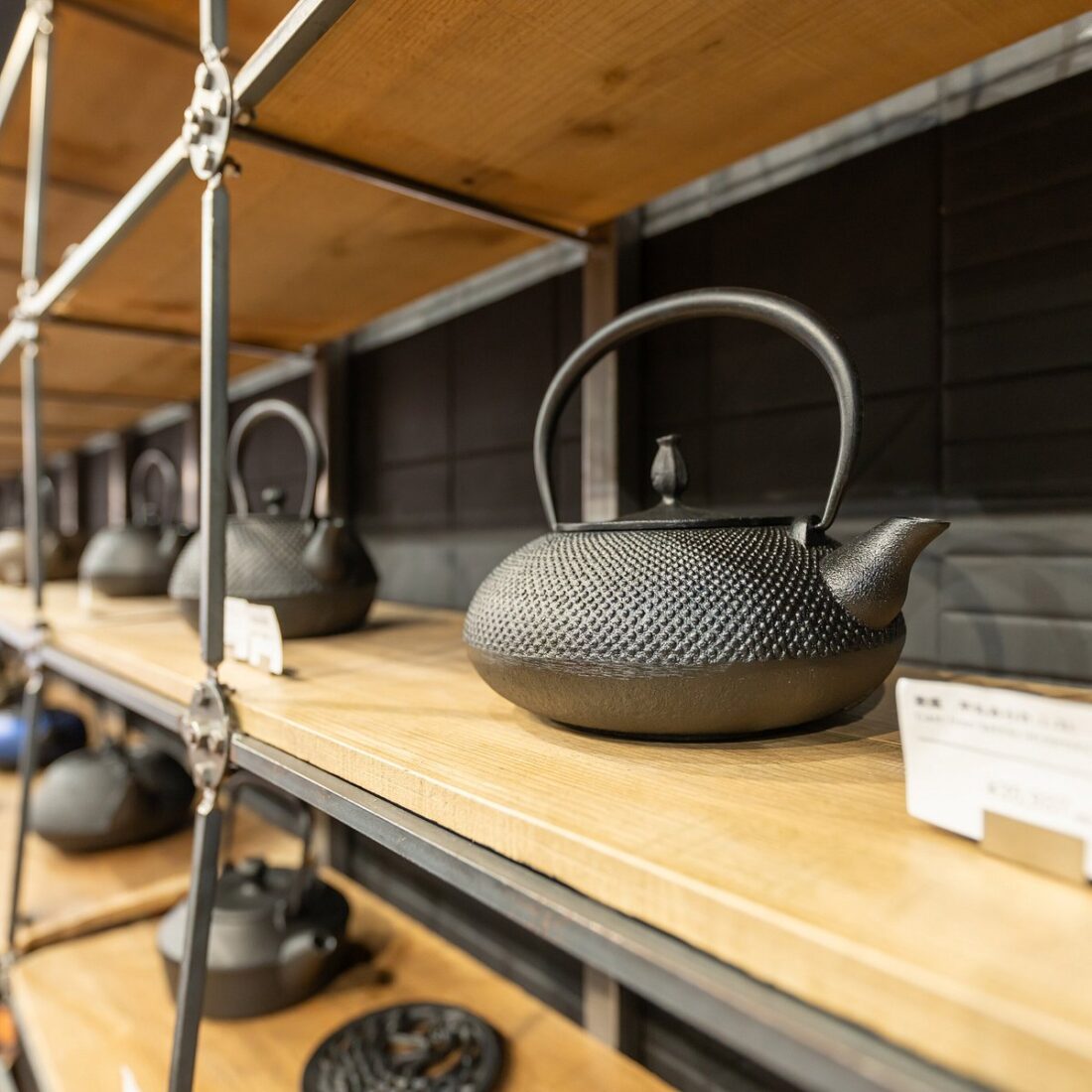
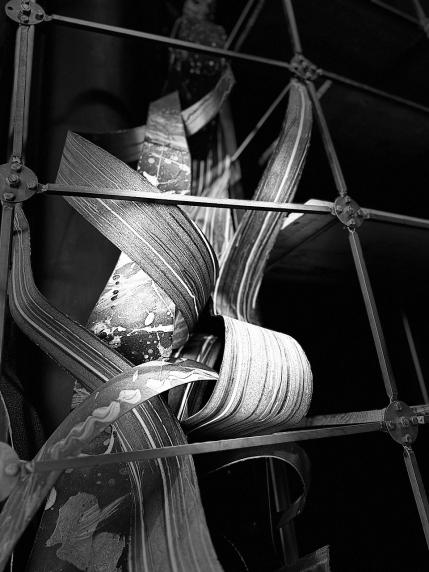

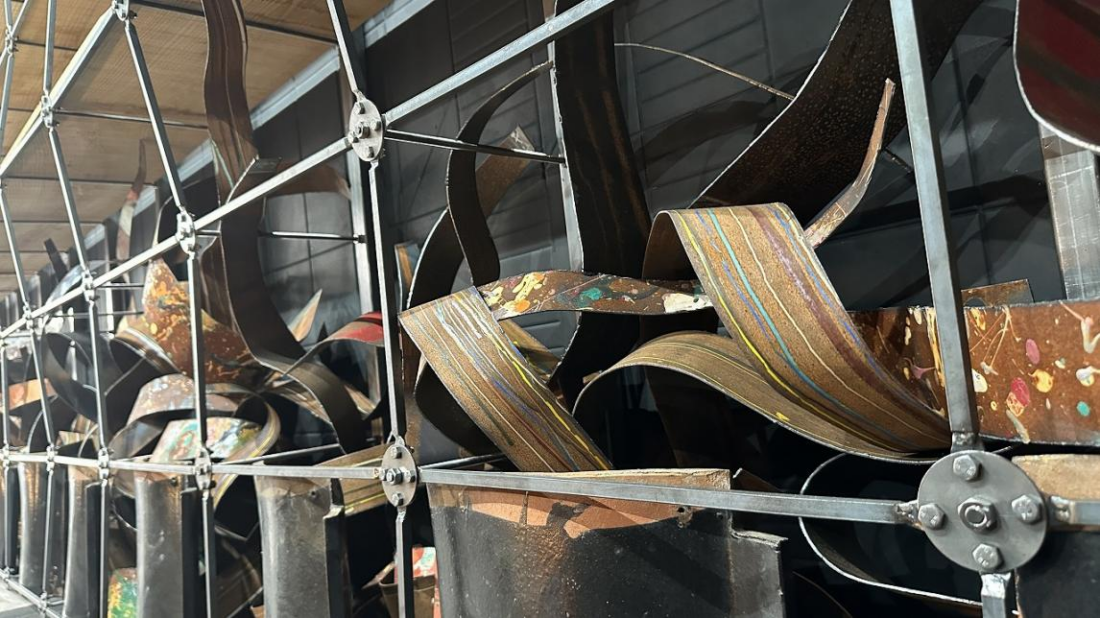
On August 17th, I visited Monzenmachi, located in the western part of Wajima. I understand that the earthquake caused the ground throughout Oku-Noto to tilt. The ground rose by up to 4 meters along the coast of this area in the northwest of Oku-Noto, while the Udetsu area in the southeast has sunk.
The magnificent Sojiji temple, from which the temple town takes its name, also suffered severe damage in the earthquake. However, the sculpture on the facade of the Daiso-do Hall was so powerful that it made you forget the damage to the surrounding area. I wanted to incorporate the awakening power of this dynamic, three-dimensional structure into this space, which is why I split the iron plate painted with Kiseki paint and arranged it as a “wild wave.”
The bottom shelf is made of Noto tiles, and the shelves are made of Noto floorboards.

[Shelf with different tea leaves and tea utensils]
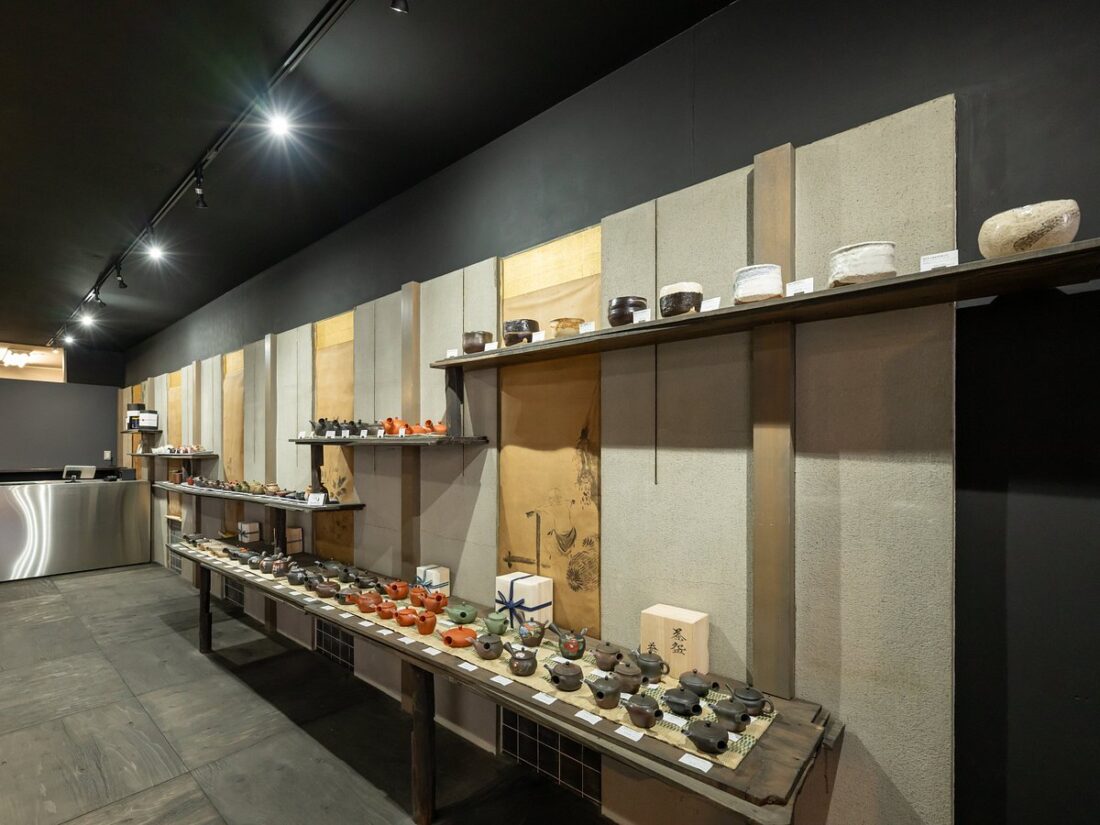

The shelves are made from Noto floorboards, and the vertical beams are made from split Kyonan beams. The background is a folding screen painting by Mori Tangyokusai from the late Edo period.
The Art of Tea is a SOTOCHIKU space realized through a creative approach: facing materials for the first time, and whenever a certain emotion strikes me, I use that feeling in my creations.
I hope this will be a space where visitors to the store can come to terms with each and every product as if it were something irreplaceable.
With this approach, I believe that even a burnt-out area like the Wajima Morning Market in April, as described in Vol. 5, can be transformed into a place with a bright future, without the need for a scrap-and-build overhaul.
I have a request for anyone with a connection to Oku-Noto.
Even a small project would be fine. Could we take on the challenge of restoring the space destroyed by the Noto Peninsula earthquake?
If you contact me, I would be happy to start by listening to your story in detail.
In the next issue, we will continue to report on SOTOCHIKU’s various activities.
August 31, 2024 GRIDFRAME Toshio Tanaka

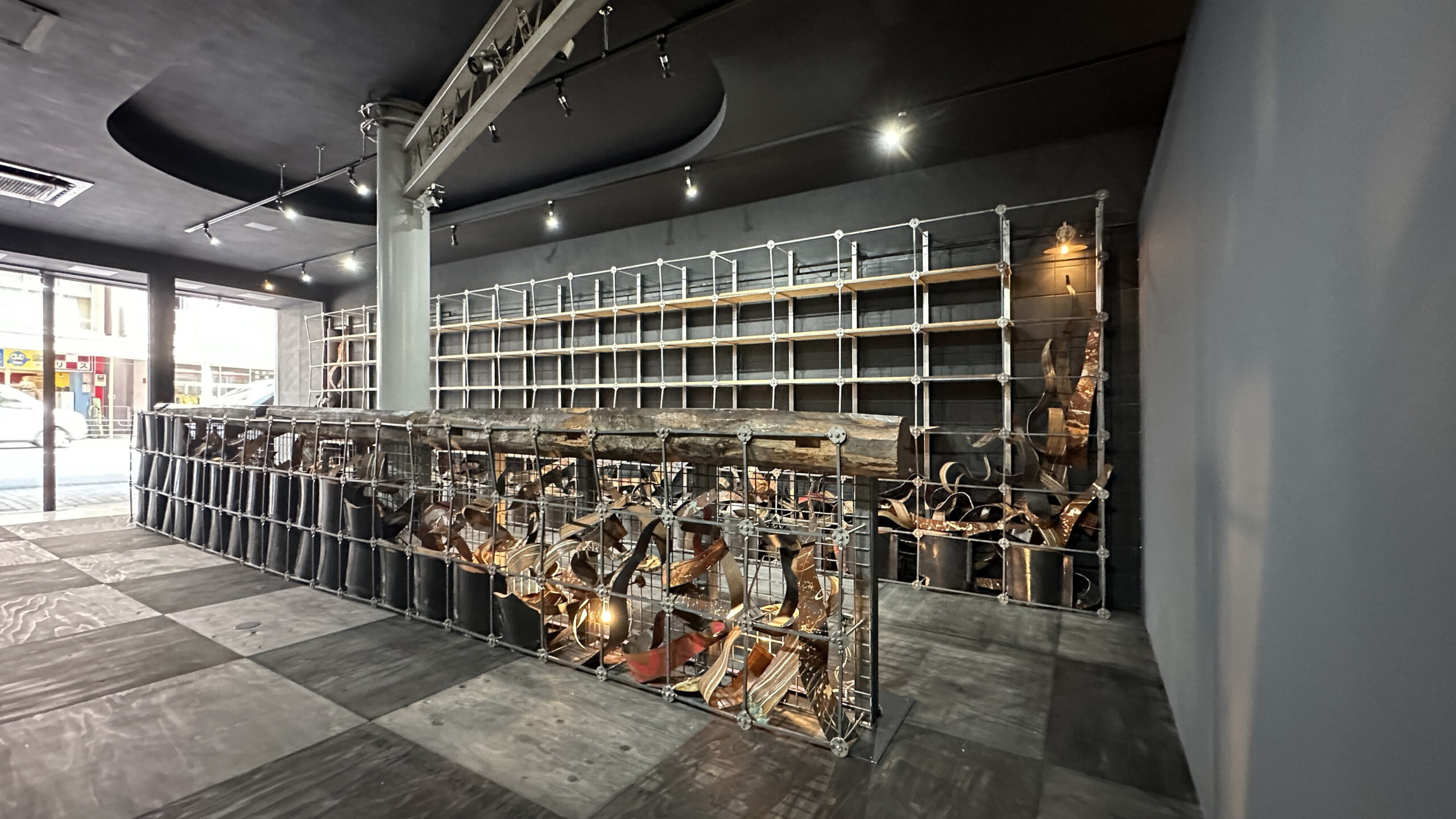
Comments are closed